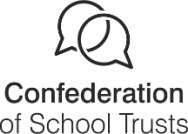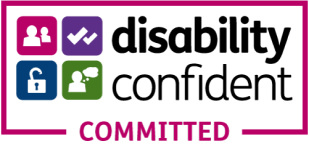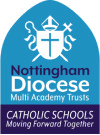RE
Our aims for the teaching of Religious Education are to enrich the lives of our pupils in the:
- Love of God for everyone and everything He created
- Understanding of the ‘Good News’ of the Lord, to enable ourselves and others to respond to God’s love
- Teaching of the Catholic faith
- Growth of faith by relating the Gospels to their lives and levels of understanding, linked to our Mission Statement and the Come and See programme
- Development of prayer and worship
- Awareness and respect of other faiths and cultures
St Patrick’s follows the Religious Education Directory (RED) Model Curriculum in ‘To know you more clearly – June 2023’. The RED fulfils the requirements of the Bishop’s Conference which sets forth the expectations for what should be covered by Religious Education teaching in Catholic Schools in England and Wales. Children are assessed in RE through the Expected end of age-phase outcomes which can be found in Section 2.3 of the RED. This also helps teachers to ensure that learning is suitably pitched in order that RE is as interesting, enjoyable and challenging as any other curriculum subject.
The programme is structured in the following way: Through knowledge lenses, ways of knowing, expected outcomes and curriculum branches.
As part of following the RED, children are taught about other world religions so that they develop an appreciation for faith in a wider sense and are appreciative and respectful of the religious beliefs, practices and observances of others thus enabling them to be responsible and constructive members of the multi-cultural, multi-faith society in which they live.
Knowledge lenses
The knowledge lenses indicate what should be known by the end if each age phase. They are referred to as lenses since they are what we are looking at.
- Hear: God’s revelation via Scripture
- Believe: Understanding the Creed (Trinity, Incarnation, etc.)
- Celebrate: Liturgy, sacraments, and prayer
- Live: How belief shapes moral and social action
- (For Dialogue & Encounter): Respectful engagement with other religions
Expected outcomes
These are a synthesis of the content outlined in the knowledge lenses and the skills described in the ways of knowing. Each age-phase will have a prescribed set of outcomes that will indicate what pupils are expected to know, remember, and be able to do, using the language of the ways of knowing and applying it to the discrete knowledge within each lens.
Ways of Knowing
The ways of knowing describe the skills that pupils develop as they progress though the religious education curriculum. These are:
- Understand: Gaining deep comprehension of texts and practices
- Discern: Evaluating meaning, truth, beauty, and implications
- Respond: Reflecting and responding personally and contextually
The six branches
The Curriculum branches are the way this programme of study presents its model curriculum.
The model curriculum presents the expected outcomes in six curriculum branches that correspond to the six half-terms of a school year. The curriculum is rooted in the narrative of salvation history and leads pupils on a journey in each year that gives a sequence to the learning. As the children revisit each branch in each year of school they come to a deeper understanding of its significance for Catholic belief and practice, which allows them to make links between the four knowledge lenses within the context of the narrative of salvation history.
- Creation & Covenant
- Prophecy & Promise
- From Galilee to Jerusalem
- From Desert to Garden
- To the Ends of the Earth
- Dialogue & Encounter (includes other faiths and worldviews)





